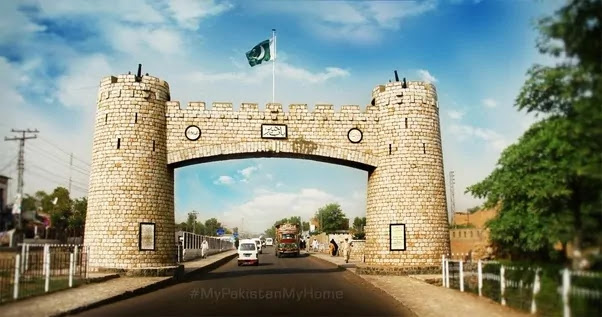 |
| Khyber-Pakhtunkhwa |
See Also:
Click On >>>Trip To Kumrat Valley: (Linked)
Click On >>>SnowFall Chance in Murree 2020: (Linked)
Click On >>>Murree Mall Road: (Linked)
Peshawar:
The Peshawar Valley Lies between the Khyber Pass and the Indus River , in North West Frontier Province of Pakistan . Supported on all aside from its eastern edge by an edge of rough and fruitless open side against the Indus River. At the Western finish of the valley in the shadow of the most elevated noticeable pinnacles and thirty miles from the outskirt of Afghanistan, the old town of Peshawar is arranged From Which the Valley infers its name. When the Western end of India's Grand Trunk Road, it is presently better referred to the world as the eastern end of the Afghanistan-Pakistan shipping lane through the Khyber Pass.
The enormous bowl channels into the Kabul River, Which Rises in Afghanistan, slices through the interceding mountain run a few miles north of the Khyber Pass , and streams straight toward the east through the Center of the valley, gathering the waters of a fan molded arrangement of unending and discontinuous streams before it purges into the Indus close Attock. From the Mountains to the Indus is a separation of around fifty miles.
Topography and Climate:
The ripe Vale of Peshawar broadens toward the north along the Kabul River. In spite of the fact that it covers short of what one-tenth of the territory's region, this area contains about portion of its all out populace. The city of Peshawar lies in the western segment of the vale. West of Peshawar, the notable Khyber Pass is deliberately significant as the most effectively debatable course among Afghanistan and the Indian subcontinent. South of the Kabul River lies the east-west-inclining Spin Ghar (SafidKud) Range. The Kurram, Tochi, and Gumal waterways channel the area's southern district, and the Indus River frames some portion of the territory's eastern outskirt.
The atmosphere differs with rise. The mountain ranges experience cold winters and cool summers, and temperatures rise uniquely southward. Precipitation over the territory is variable however midpoints approximately 16 inches (400 mm) yearly, with quite a bit of this happening during the period from January to April.
The mountain inclines in the north help stands of evergreen oak and pine. There are additionally broad mountain fields. The slopes toward the south are inadequately secured with brambles, acacia, and grasses.
Dialects:
The predominant language of the Province, Pashto, has a place with the Irani part of the Aryan group of dialects. It has two principle vernaculars: Pakhto and Pashto. Pakhto is the hard or north-eastern adaptation spoken in Bajaur, Swat and Buner, by the Yusufzai, Bangash, Orakzai, Afridi and Momand clans. Pashto is the delicate or south-western rendition spoken by the Khattaks, Wazirs, Marwats and different clans in the south. The most punctual Pashto works were made in the Yusufzai lingo which is viewed as traditional. It is the most perfect and the most clear type of the language.
Languages:
- Pakhto/Pashto is the significant language, spoken and saw for the most part in the focal areas.
- Hindko, (a Punjabi lingo) is in Majority in Hazara Division and furthermore in the focal old city zones of Nowshera, Kohat and Peshawar urban areas.
- Saraiki(a Punjabi lingo) is in greater part in the southern
- Locale of DI Khan and Tank Khowar, by individuals in the north exceptionally in greater part in region Chitral
- Standard Punjabi, minority living in the significant urban communities and all cantonment zones.
- Kohistani, lion's share in Kohistan area and north 50% of Swat region.
- Gojr iminority all through northern portion of the area. Dari/Hazaragi/Farsi/Tajik, assortments of Persian by Afghan exiles
- Different dialects Include, Kashmiri, Shina, Romani, Burushaski, Wakhi, Balti, Balochi, Brahui, Sindhi and English (official and utilized in the travel industry) Only Urdu and English are found as composed dialects in the city. English, the official language of Pakistan, is essentially utilized for official and abstract purposes.


